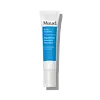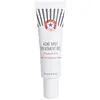What's inside
What's inside
 Key Ingredients
Key Ingredients

 Benefits
Benefits

 Concerns
Concerns

 Ingredients Side-by-side
Ingredients Side-by-side

Salicylic Acid 2%
MaskingWater
Skin ConditioningAlcohol
AntimicrobialHamamelis Virginiana Water
AstringentPropanediol
SolventPentylene Glycol
Skin ConditioningGlycerin
HumectantSilica
AbrasiveButylene Glycol
HumectantPolyacrylate Crosspolymer-6
Emulsion StabilisingC12-15 Alkyl Lactate
EmollientAesculus Hippocastanum Seed Extract
Skin ConditioningAvena Sativa Kernel Extract
AbrasiveUrea
BufferingYeast Amino Acids
HumectantTrehalose
HumectantInositol
HumectantTaurine
BufferingBetaine
HumectantThymol
AntimicrobialTerpineol
MaskingHydroxyphenyl Propamidobenzoic Acid
Skin ConditioningButyrospermum Parkii Butter
Skin ConditioningShea Butter Ethyl Esters
Emollient4-T-Butylcyclohexanol
MaskingDisodium EDTA
Sodium Hydroxide
BufferingSalicylic Acid 2%, Water, Alcohol, Hamamelis Virginiana Water, Propanediol, Pentylene Glycol, Glycerin, Silica, Butylene Glycol, Polyacrylate Crosspolymer-6, C12-15 Alkyl Lactate, Aesculus Hippocastanum Seed Extract, Avena Sativa Kernel Extract, Urea, Yeast Amino Acids, Trehalose, Inositol, Taurine, Betaine, Thymol, Terpineol, Hydroxyphenyl Propamidobenzoic Acid, Butyrospermum Parkii Butter, Shea Butter Ethyl Esters, 4-T-Butylcyclohexanol, Disodium EDTA, Sodium Hydroxide
Water
Skin ConditioningButylene Glycol
HumectantHydroxyethylcellulose
Emulsion StabilisingGlycerin
HumectantPhenoxyethanol
PreservativeSodium Hydroxide
BufferingGlycolic Acid
BufferingUrea
BufferingAloe Barbadensis Leaf Juice
Skin ConditioningBisabolol
MaskingColloidal Oatmeal
AbsorbentMaltodextrin
AbsorbentCarica Papaya Fruit Extract
Skin ConditioningPotassium Sorbate
PreservativeSodium Benzoate
MaskingCamellia Sinensis Leaf Extract
AntimicrobialChrysanthemum Parthenium Extract
Skin ConditioningGlycyrrhiza Glabra Root Extract
BleachingSalix Nigra Bark Extract
Skin ProtectingDisodium Phosphate
BufferingPolysorbate 60
EmulsifyingLeuconostoc/Radish Root Ferment Filtrate
AntimicrobialSodium Phosphate
BufferingCitric Acid
BufferingWater, Butylene Glycol, Hydroxyethylcellulose, Glycerin, Phenoxyethanol, Sodium Hydroxide, Glycolic Acid, Urea, Aloe Barbadensis Leaf Juice, Bisabolol, Colloidal Oatmeal, Maltodextrin, Carica Papaya Fruit Extract, Potassium Sorbate, Sodium Benzoate, Camellia Sinensis Leaf Extract, Chrysanthemum Parthenium Extract, Glycyrrhiza Glabra Root Extract, Salix Nigra Bark Extract, Disodium Phosphate, Polysorbate 60, Leuconostoc/Radish Root Ferment Filtrate, Sodium Phosphate, Citric Acid
 Reviews
Reviews

Ingredients Explained
These ingredients are found in both products.
Ingredients higher up in an ingredient list are typically present in a larger amount.
Butylene Glycol (or BG) is used within cosmetic products for a few different reasons:
Overall, Butylene Glycol is a safe and well-rounded ingredient that works well with other ingredients.
Though this ingredient works well with most skin types, some people with sensitive skin may experience a reaction such as allergic rashes, closed comedones, or itchiness.
Learn more about Butylene GlycolGlycerin is already naturally found in your skin. It helps moisturize and protect your skin.
A study from 2016 found glycerin to be more effective as a humectant than AHAs and hyaluronic acid.
As a humectant, it helps the skin stay hydrated by pulling moisture to your skin. The low molecular weight of glycerin allows it to pull moisture into the deeper layers of your skin.
Hydrated skin improves your skin barrier; Your skin barrier helps protect against irritants and bacteria.
Glycerin has also been found to have antimicrobial and antiviral properties. Due to these properties, glycerin is often used in wound and burn treatments.
In cosmetics, glycerin is usually derived from plants such as soybean or palm. However, it can also be sourced from animals, such as tallow or animal fat.
This ingredient is organic, colorless, odorless, and non-toxic.
Glycerin is the name for this ingredient in American English. British English uses Glycerol/Glycerine.
Learn more about GlycerinSodium Hydroxide is also known as lye or caustic soda. It is used to adjust the pH of products; many ingredients require a specific pH to be effective.
In small amounts, sodium hydroxide is considered safe to use. However, large amounts may cause chemical burns due to its high alkaline.
Your skin has a natural pH and acid mantle. This acid mantle helps prevent harmful bacteria from breaking through. The acid mantle also helps keep your skin hydrated.
"Alkaline" refers to a high pH level. A low pH level would be considered acidic.
Learn more about Sodium HydroxideUrea is also called carbamide and is the diamide of carbonic acid. In cosmetics, urea is used to hydrate the skin. It also provides exfoliation in higher concentrations.
As a humectant, urea helps draw moisture from the air and from deep within the skin. This helps hydrate your skin. Studies show urea is an effective moisturizer for dry skin conditions. 40% urea is typical in medications for treating eczema and other skin conditions.
Urea has the strongest exfoliation effect in concentrations higher than 10%. It is a keratolytic agent, meaning it breaks down the keratin protein in the top layer of skin. This helps remove dead skin cells and flaking skin.
In medicine, urea has been shown to help increase the potency of other ingredients, such as fungal treatments.
Humans and animals use urea to metabolize nitrogen-containing compounds. Urea is highly soluble in water. Once dissolved, it is neither acidic nor alkaline.
Learn more about UreaWater. It's the most common cosmetic ingredient of all. You'll usually see it at the top of ingredient lists, meaning that it makes up the largest part of the product.
So why is it so popular? Water most often acts as a solvent - this means that it helps dissolve other ingredients into the formulation.
You'll also recognize water as that liquid we all need to stay alive. If you see this, drink a glass of water. Stay hydrated!
Learn more about Water